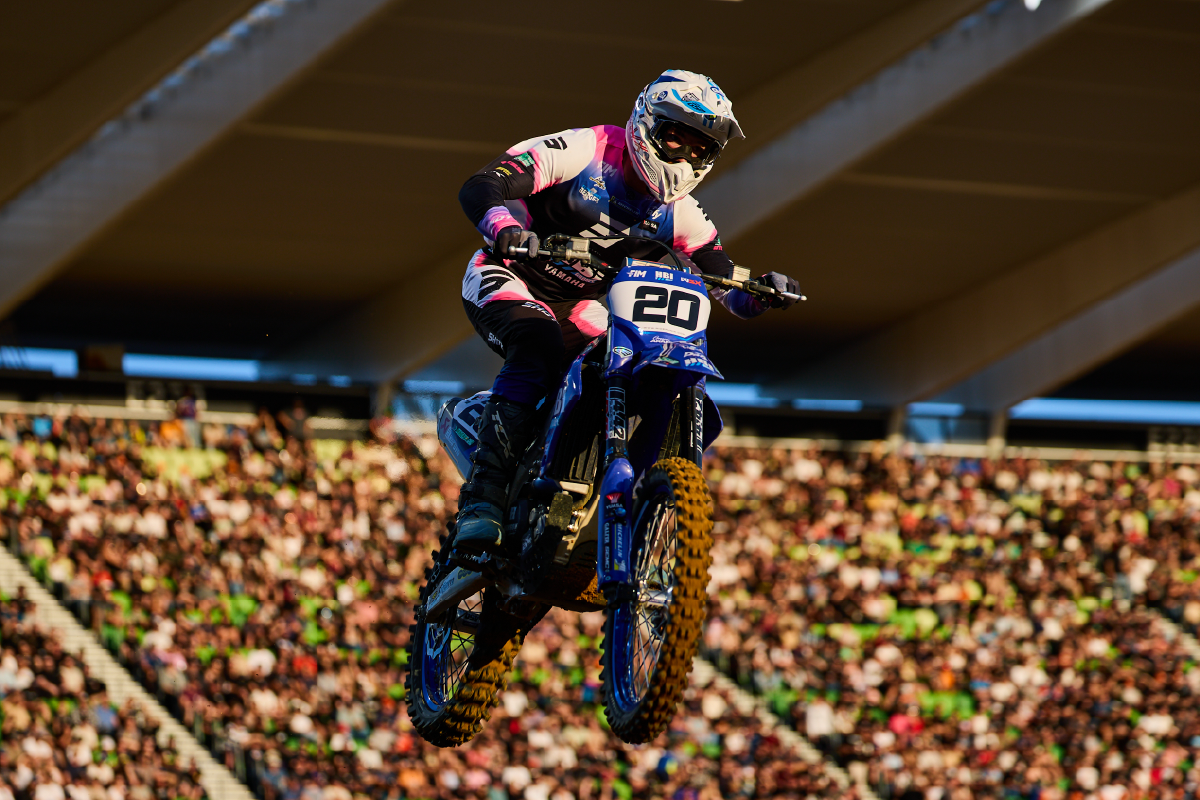
Oscar & Juan Gálvez Racetrack


By Adam Wheeler
Super Bowl. Superman. Supernova. Whenever you see that ‘super’ prefix, it signals something special.
Supercross fits that mould today, a high-octane spectacle of speed and skill, but its origins tell a humbler story.
The sport traces its roots back to the turn of the 20th century, from motocross and ‘scrambles’, when motorcycle riders first began testing their limits long before stadium lights and roaring crowds made it truly ‘super.’
For the first recorded appearance of motocross, we must travel back to Britain in 1913, an era of suffragettes, silent films, and motorcyclists tinkering with rattling machines on rough country courses.
In Carlisle, the pioneering International Six Days Trial tested both rider and machine across unforgiving terrain. It laid the foundations for off-road racing and planted the seed of what would become motocross, all the way through time trials, small clubs, independent events and eventually to the formation of the FIM, the official governing body for two-wheeled motorsport.
The motorcycle boom after World War II accelerated things further. As demand soared, competition did too. Manufacturers like BSA and Triumph began building bikes specifically for an adrenaline-fuelled sport that, within half a century, would become truly international.
He wanted a place that was cooler, had cleaner bathrooms, where the beer was cold, and the hotdogs were hot
“In the 1950s and 1960s, people were happy to escape the cities and get their shoes dirty,” says Xavier Audouard, originator of the Paris Supercross, and writer of 2004 seminal book:The Great History of Supercross. “Look at the old photos of motocross, and people are there with city gear, like they are going to the office. But later, supercross was a way to get away from the elements and bring the sport to them. Racing motocross in stadiums was a universal idea in progress,” Audouard wrote in his book.
There are accounts of stadium-based racing in Czechia, the U.S. and France through the midway point of the last century but the concept of supercross really took-off in the United States. The visionary was Mike Goodwin, a concert promoter who, after watching motocross in Carlsbad, wondered why the sport couldn’t work inside a different and more comfortable environment. “He wanted a place that was cooler, had cleaner bathrooms, where the beer was cold, and the hotdogs were hot,” Audouard explained. “The next thing he knew he was promoting a concert in the LA Coliseum and thought ‘why can’t I do motocross in a stadium?’ It would solve a lot of problems. It was quite visionary at the time…but it had been done before.”
The famous Daytona Speedway constructed a motocross track inside the banked circuit in 1971. Then Goodwin erected his event in Los Angeles in 1972 and rebranded his stadium motocross as the ‘Super Bowl of Motocross’. His idea clicked, and with American flair for showmanship, the discipline took off. By 1974 a two round AMA-sanctioned series was taking place while California became a hub for the moto industry.
“They had more TV potential and stadiums that were open to possibilities,” Audouard says about the sport’s growth in the USA, the use of vast NFL and MLB complexes and as the North American motorcycle market blossomed. They had a different approach with the stadiums. They were more versatile and more open for business compared to Europe. There was supercross in the stadium used by the soccer team Paris Sant Germain in the late ’80s or ’90s and part of the grass was still yellow afterwards. [The pitch] was still OK but it was a major scandal. It was sacrilege to disturb anything that related to soccer!”
Supercross also found a willing clientele in the U.S. Audouard added: “The American public were fonder of comfort while watching entertainment, remember Drive-in movies? Public mentality has something to do with it.”
The sport grew quickly in the U.S., powered by sponsorship, media coverage, and the personalities of stars like Ricky Johnson and Jeremy McGrath – still the all-time race winner with a record 72 premier class supercross wins. Within 25 years, the calendar expanded from two rounds to 16 across 13 states, and supercross became a distinctly American discipline, embraced by entertainment corporations as much as by fans.
The American public were fonder of comfort while watching entertainment, remember Drive-in movies? Public mentality has something to do with it
But the sport did not stay contained in America. Almost a century on from Carlisle, the FIM World Championship was established and carrying AMA riders and teams to new venues across France, Spain, Switzerland, and the Netherlands. Today, World Supercross continues to push outward, with new countries on the calendar as the sport continues to grow out from his UK roots.
The bikes have changed, technology has evolved, and the tracks have grown progressed, with higher jumps, engineered obstacles, and regulated whoops. The athletes themselves are fitter, stronger, more physical than ever. And yet, the essence remains unchanged: the glorious simplicity of riders racing side by side, fighting the dirt, and thrilling the crowd.
From its muddy beginnings in England and the European continent to the bright lights of Daytona and into its current era, the supercross story goes on.